Desi Khand and Bura are both traditional sweeteners that have been used in Indian kitchens for centuries. They are derived from sugarcane juice that is boiled down to a thick syrup and then crystallized. They are coarse-textured and flavorful sugar compounds that are different from the refined white sugar commonly used every day in most parts of the world. Desi khand is also known as khaand, khand, and ‘khandsari’.
Unlike processed white sugar, these sweeteners are steeped in history and health. As more people shift towards natural alternatives, Desi Khand and Bura are gaining popularity for their earthy flavor and potential health benefits. Let’s explore why they may be the perfect substitutes for refined sugar in your daily diet.
To truly understand some basic questions like what is khand? How is it different from sugar? Is brown sugar the same as khand? Can they be considered as true sugar alternatives? Some of these questions will be answered in this blog post for everyone to understand and appreciate what we consume regularly.
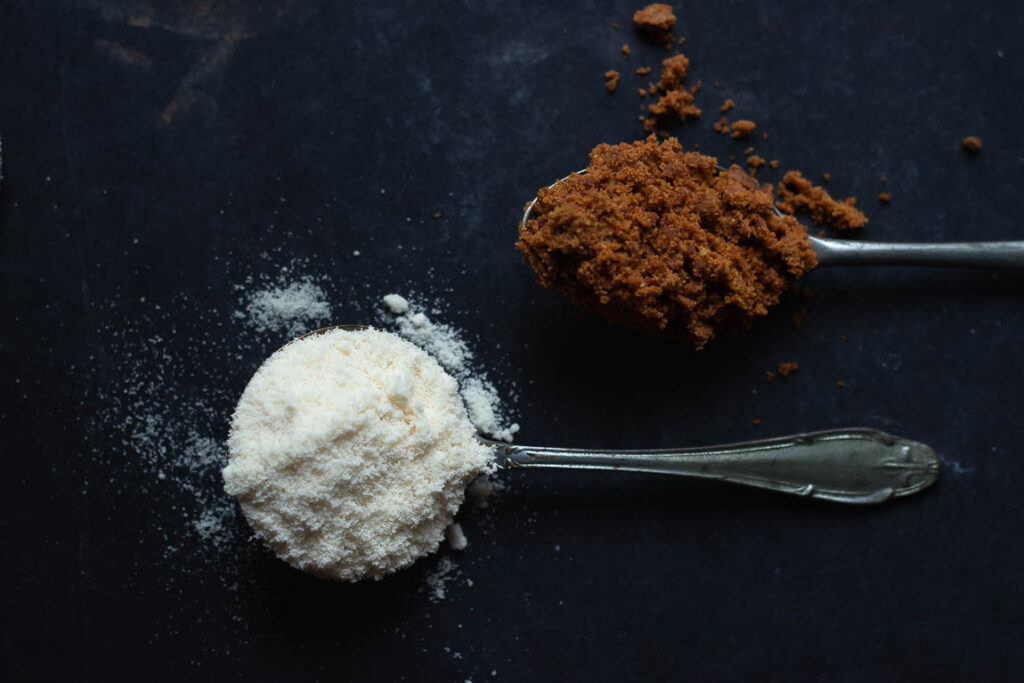
In India, Desi Khand and Bura have been used for a long time in cooking, baking, and sweets making, and are considered to be an integral part of Indian cuisine. They are typically associated with traditional Indian celebrations and festivals, such as Diwali, where they are used to make sweets to be enjoyed at home or exchanged among friends and family as gifts. Unfortunately, most Indians have forgotten the use of Desi Khand & Bura which their great-grandmothers used. It is all a case of easy, simple, and convenient. Also whiter the better is the go-to sentiment.
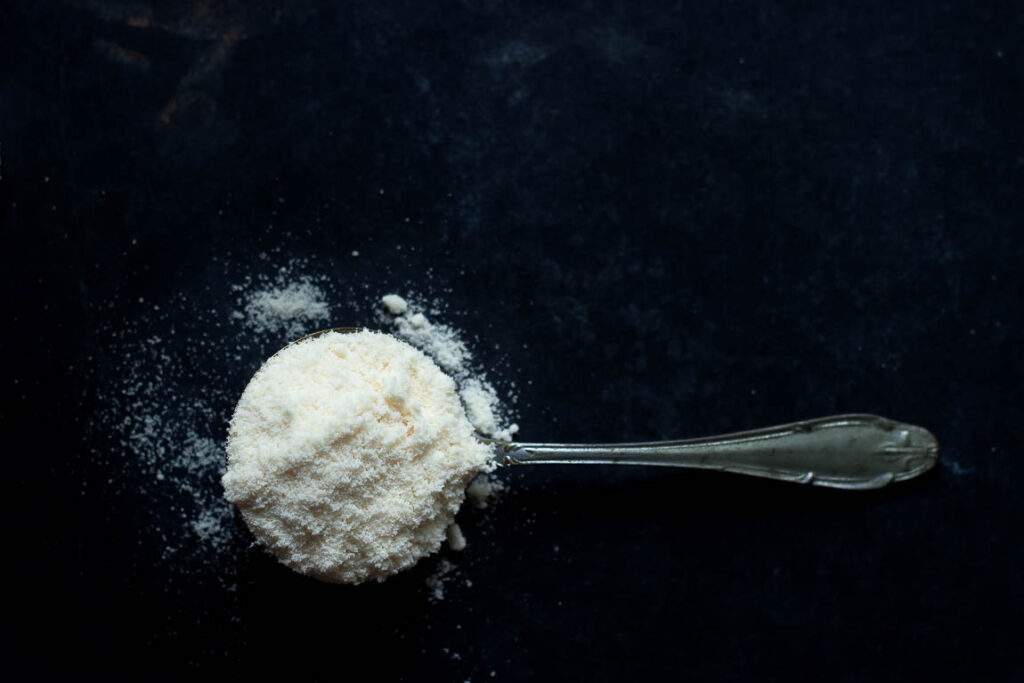
Desi Khand and Bura are often believed to be healthier alternatives to refined sugar, as they retain some of the nutrients found in sugarcane, and have a lower glycemic index. They also impart a unique flavor that can enhance the taste of traditional Indian dishes and sweets. To know more about khand vs sugar and their impact as sugar alternatives, read till the end of the blog.
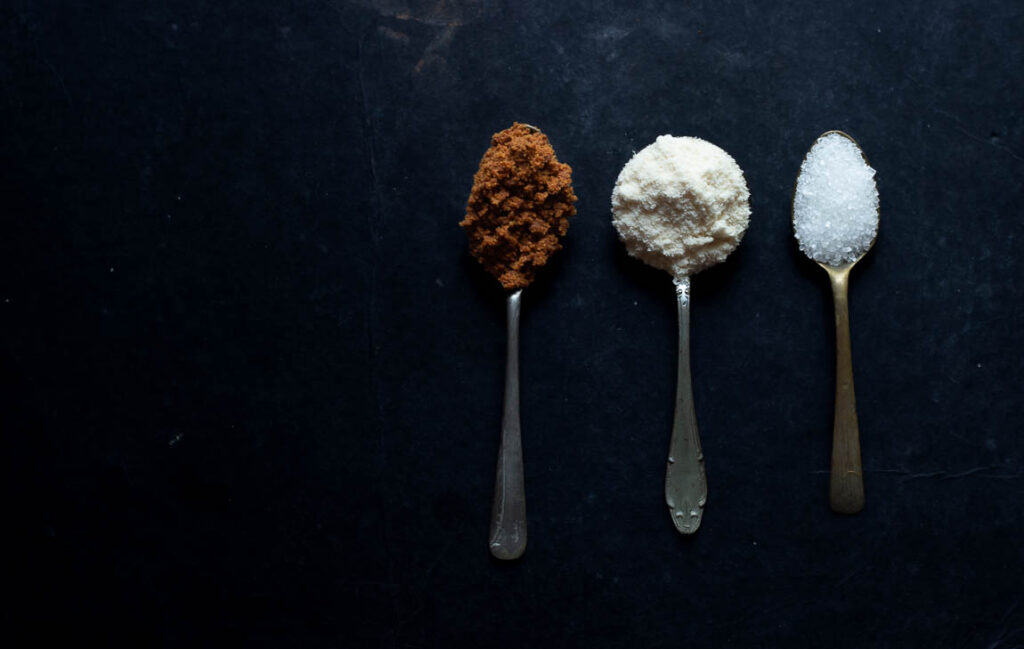
What is Desi Khand and Bura? Understanding Traditional Indian Sweeteners
Desi Khand is a natural, unrefined sugar made from sugarcane juice. It undergoes minimal processing, which helps retain its natural nutrients like calcium, iron, magnesium, and phosphorus.
Bura, or Tagar, is a fine, powdery sweetener prepared by caramelizing sugar and then cooling it into granules. It has a light color and delicate texture, often used in festive sweets like laddoos and barfis.
What’s the difference between Desi Khand, Shakkar, Bura, and Cheeni? (Desi Khand vs. Bura vs. Shakkar vs. Cheeni)
Desi Khand, Shakkar, Bura, and Cheeni are different types of sugar commonly used in India.
- Desi Khand is a type of unrefined cane sugar, which is coarser in texture and darker in color than regular sugar.
- Shakkar has a dark brown color and is another type of unrefined sugar.
- Bura is also unrefined sugar, often produced from sugarcane juice, and has a light cream to pale brown color.
- Cheeni is another name for granulated sugar, which is the most common type of sugar used in cooking and baking.
These different types of sugar are used in various Indian dishes, sweets, and desserts, with each type having its unique taste and color. The difference between khand and sugar also comes from the molasses content, processing, color, flavor & usage. You can read more in the FAQs at the end of the post.
| Feature | Desi Khand | Bura | Shakkar | Cheeni (White Sugar) |
|---|---|---|---|---|
| Processing | Minimally processed | Caramelized then crystallized | Traditionally made from jaggery | Highly refined with chemicals |
| Texture | Coarse, grainy | Fine, powdery | Granular or fine powder | Fine, crystalline |
| Color | Golden to light brown | Off-white to pale yellow | Brown to light brown | Pure white |
| Taste | Mild, earthy sweetness | Delicate, caramel-like sweetness | Deep, robust sweetness | Sharp, neutral sweetness |
| Nutrient Value | Retains natural minerals | Retains some nutrients | Rich in iron and minerals | Low nutritional value |
| Shelf Life | 12–18 months | 6–12 months | 6–12 months | 18–24 months |
| Common Uses | Tea, desserts, daily cooking | Laddoos, barfis, traditional sweets | Ayurvedic remedies, sweet dishes | All-purpose, mass-produced sweets |
| Ayurvedic View | Preferred for balance | Considered gentle and cooling | Highly recommended | Avoided due to internal heat |
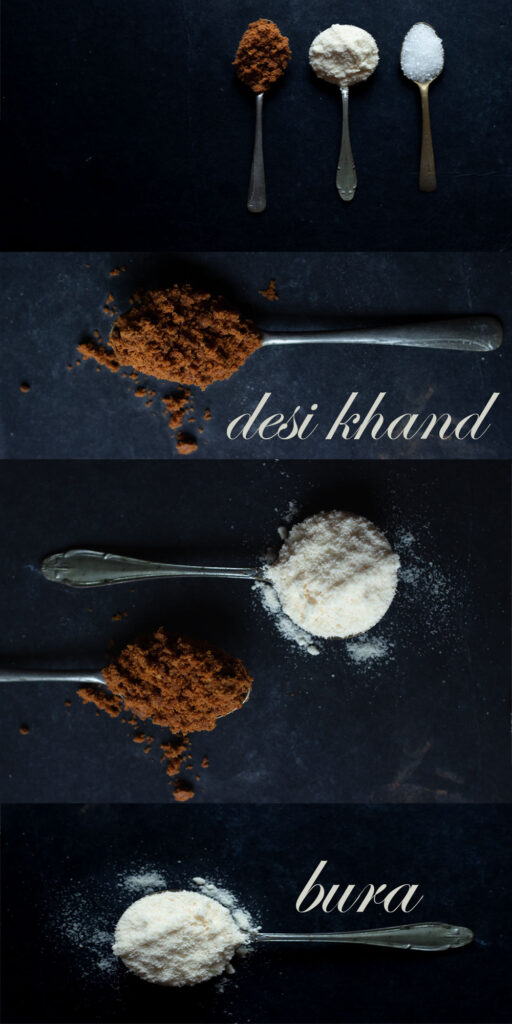
Why Desi Khand and Bura are the Best Sugar Substitutes? (Health Benefits of Desi Khand and Bura)
Desi Khand and Bura, being unrefined sugar, may have some health benefits compared to refined sugar:
- Higher nutrient content: Desi Khand and Bura retain some of the minerals and nutrients found in sugarcane, such as calcium, magnesium, and potassium, while most of these are lost in the refining process.
- Lower glycemic index: Desi Khand and Bura have a lower glycemic index than refined sugar, which means it is absorbed into the bloodstream more slowly and is less likely to cause rapid spikes in blood sugar levels.
- More Flavor: Desi Khand and Bura have a stronger and more complex flavor than refined sugar, due to their coarser texture and higher mineral content, which can enhance the flavor of certain dishes. Indian sweets tend to taste better with strong flavors.
- Better for the environment: The production of Desi Khand and Bura typically uses traditional methods that are more sustainable and have less impact on the environment than the highly industrial methods used to produce refined sugar.
However, it is essential to note that, despite these potential benefits, Desi Khand and Bura still contain a large amount of sugar, and should be consumed in moderation as part of a balanced diet. Do you want to know if khand and brown sugar are the same? Read on…
Is Desi Khand and Bura Good for Diabetes?
When managing diabetes, it’s essential to monitor sugar intake and choose natural alternatives with a lower glycemic impact. Desi Khand and Bura are often considered better than refined white sugar, but are they safe for diabetics?
Desi Khand for Diabetes
Desi Khand is a traditional, unrefined sugar that retains trace minerals like calcium, iron, and magnesium due to minimal processing. While it’s less processed and considered more natural than white sugar, it still contains sucrose, which can raise blood glucose levels.
- Glycemic Index (GI): Slightly lower than refined sugar, but still high enough to affect blood sugar.
- Nutritional Advantage: Retains some minerals, but not enough to offset the impact on glucose levels.
- Conclusion: Desi Khand is marginally better than white sugar but should be used in strict moderation by diabetics.
Bura for Diabetes
Bura is a popular powdered sweetener in Indian households, often used in sweets like laddoos and halwas. Though it’s less refined than white sugar and may have a milder sweetness due to the caramelization process, it is still a form of sugar.
- Glycemic Index: Comparable to or slightly lower than white sugar.
- Processing: Less chemically treated, but not suitable as a diabetic-friendly sweetener.
- Conclusion: Bura, like Desi Khand, is not ideal for diabetics and should be avoided or strictly limited.
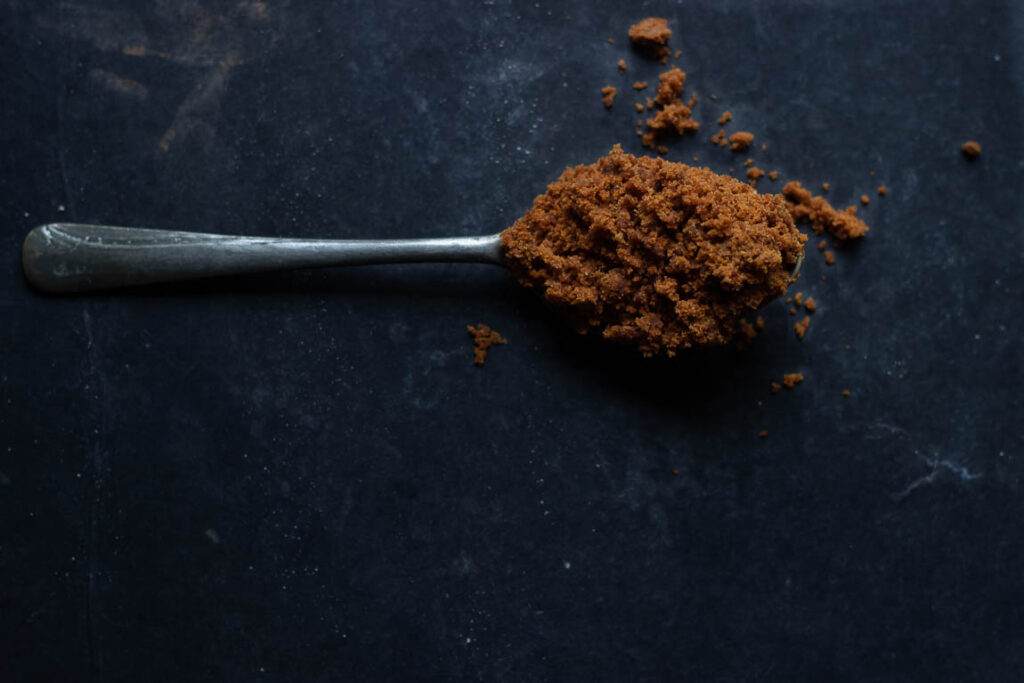
The Best Uses of Desi Khand and Bura
Desi Khand and Bura are commonly used in Indian cooking and baking for their unique flavor and texture:
- For Sweetening drinks: Desi Khand and Bura are commonly used to sweeten Indian beverages such as lemongrass ginger herbal tea, lemon tea, coffee, thandai, Masala Doodh | Kadha Doodh, aam panha, and badam milk, giving them a rich and complex flavor.
- Baking: They can be used as a sweetener in baked goods, such as cakes, cookies, and bread, to add a distinctive taste and natural color. They go well with bakes based on clarified butter or ghee or complement Indian cuisine, like mawa cake, cashew cake, rose cake, gulab jamun cake.
- Sweets and desserts: Desi Khand and Bura are often used in traditional Indian sweets and desserts, such as laddu, barfi, halwa, bajre ki kheer, gur ki kheer, and jalebi, to add a rich flavor and natural color.
- Chutneys and sauces: They are sometimes used as a sweetener in Indian chutneys and sauces, such as tamarind and mint chutney, to balance out the tangy and spicy flavors.
- Cooking: They can be used as a sweetener in Indian dishes, such as curries and stews, to add depth and complexity to the flavors. Some cuisines in India also use sugar in most of their savory dishes, like Bengali and Gujarati.
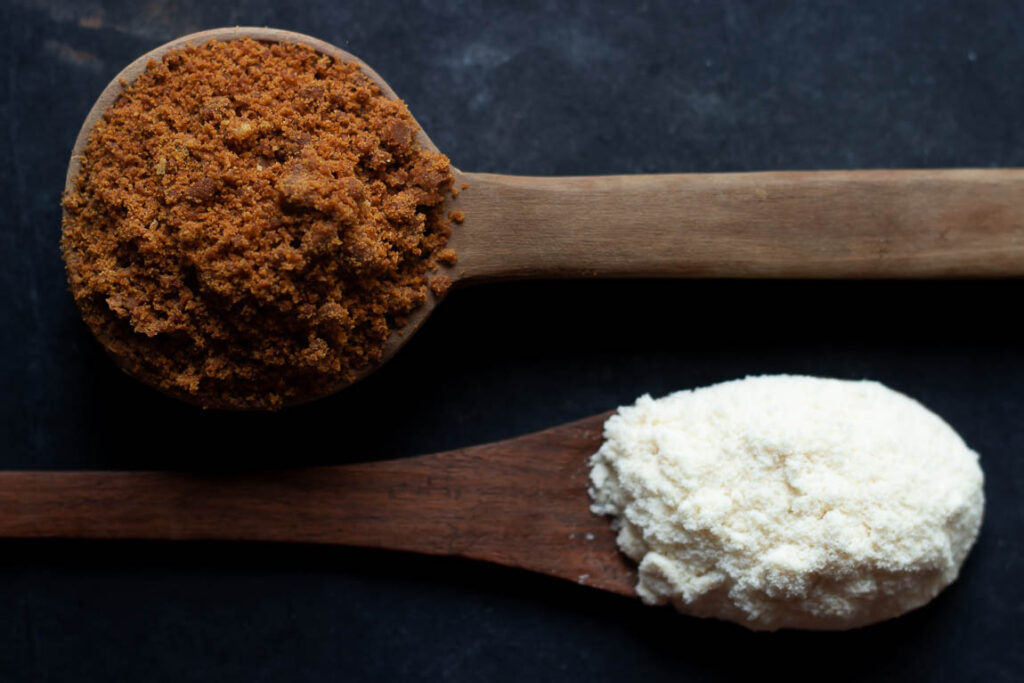
Traditional Indian Recipes Using Desi Khand and Bura
Desi Khand and Bura have long been staples in Indian kitchens, especially in homes that prefer less processed and traditional ingredients. These sweeteners lend a rich, earthy sweetness and grainy texture that enhances both taste and aroma. Let’s explore some beloved recipes where they shine:
1. Laddoo (Laddu)
Whether it’s besan laddoo, motichoor laddoo, til ke laddoo or attar ke laddoo, Bura sugar is the go-to sweetener. Its fine texture blends beautifully with ghee and roasted flour, giving the laddoo a melt-in-the-mouth feel.
- Why Bura? Because it doesn’t clump and mixes evenly, giving a smooth, rich sweetness.
Besan Ke Ladoo
Ingredients
- 3 cups besan coarse gram flour
- 1 tbsp semolina
- 200 ml ghee clarified butter
- 3 cups castor sugar bura
Instructions
- In a thick bottom pan or wok, add ghee & besan. Now roast the besan till it starts emitting nice roasted aroma. Besan upon roasting leaves more ghee, so add ghee accordingly. Remove from pan and keep aside.
- When it is just lukewarm quickly add in castor sugar. Mix well.
- Roll small balls using hands. Serve with tea or coffee or as a dessert after dinner.
Til ke Ladoo
Ingredients
- 150 gram sesame seeds til
- 150 gram fresh khoya khoa, mawa
- 150 gram castor sugar bura
Instructions
- Wash the sesame seeds using a fine mesh colander/ strainer very thoroughly. This step is important as sesame seeds contain lot of fine dirt. Spread the washed seeds on a fine muslin cloth in thin layer. Allow it to dry for 2-3 days.
- When the seeds are completely dry or just very barely moist, dry roast them in a thick bottom pan or wok. It should start emitting nice roasted aroma. Remove from pan and keep aside. Using the same pan, dry roast the khoa, till it is nice golden in color. Switch off the flame. Allow the khoya to cool down.
- Meanwhile, using a grinder, grind the sesame seeds into fine powder. When mawa is just lukewarm quickly add in ground seeds & sugar. Mix well. Roll small balls using hands. Serve with tea or coffee or as a dessert after dinner.
Notes
- Washing the sesame seeds is most crucial step.
- You can wash and roast the seeds much ahead of time and when you are ready to make the ladoos, then you can give a quick heat to seeds and grind them. I did the same.
- You can adjust sugar as per your taste. I prefer less sweet, so mine is on the lesser side.
2. Gur Para / Shakkar Para
In some variations of this crispy tea-time snack, Desi Khand or Shakkar is used instead of jaggery or refined sugar. After frying, the diamond-shaped pieces are tossed in melted khand or shakkar syrup, which then crystallizes into a delicious, sweet coating.
- Bonus: The rustic sweetness adds an authentic touch.
3. Panjiri
This North Indian winter delicacy, often given to new mothers, includes wheat flour, dry fruits, ghee, and Desi Khand or Shakkar. The unrefined sugar complements the nutty aroma of the roasted flour, making it wholesome and flavorful.
- Added Benefits: Desi Khand is believed to have warming properties and aids digestion.
Panjiri
Ingredients
- ½ cup dessicated coconut
- ⅛ cup almonds chopped
- ⅛ cup cantaloupe seeds giri
- 1 cup sugar granulated
- ½ cup water
- ¼ cup milk
Instructions
- Dry roast coconut, almonds and seeds. Keep aside.
- Grease a baking sheet/ thaali with ghee/ clarified butter.
- Mix sugar & water in a heavy bottom wok. Allow it to boil on medium flame.
- Once the sugar is dissolved, add milk. Milk allows the impurities to be removed.
- A scum will form on surface, quickly remove it by skimming the surface with a spoon. You can strain it as well.Put back on flame and allow to boil a few more minutes.
- Dip a wooden spoon in the syrup & lift out. Allow to cool for few seconds as it would be very hot, then gently touch the syrup with clean forefinger. Now touch you thumb with forefinger & pull them apart gently. The syrup should form a single thread and should not break upon pulling apart. The threads are reached quickly after this point so keep checking regularly.
- Remove the syrup from flame and add in the roasted mixture. Quickly mix together.
- Quickly spread this mixture onto the prepared baking sheet. Smooth out the surface by pressing using the back of spoon/ spatula or fingers (be careful if using fingers as it is very hot).
- Using a knife, cut the spread mixture into any shape/ size you like before it cools. Allow it to cool completely. Last few steps have to be all done quickly for best results.
- Once cooled, gently remove the cut Panjiri and store.
4. Peda / Khoya-based Mithai
In traditional pedas, Bura is used instead of white sugar. Its mildly caramelized taste works perfectly with khoya or milk solids, giving these sweets a soft, grainy texture.
5. Sheera / Suji Halwa
Instead of regular sugar, Desi Khand is sometimes used in suji halwa or atta halwa. It not only adds sweetness but also enhances the nutty flavor of roasted semolina or whole wheat flour.
6. Churma / Churma Laddoo
In Rajasthani cuisine, churma—a sweet mix of crumbled wheat dough balls fried in ghee—is traditionally mixed with Desi Khand or Shakkar and dry fruits to form laddoos.
- Why It Works: The deep, caramel tone of shakkar adds depth to the earthy base of churma.
7. Sweetened Milk / Doodh with Khand
A simple yet comforting traditional drink, hot milk sweetened with Desi Khand is often given to children or elders for its soothing effect and nutritional value.
Masala Doodh or Kadha Doodh
Ingredients
- 1½ litre full cream milk
- ¼ cup almond badam
- ¼ cup pistachios pista
- ⅛ cup cashew nut kaju
- 5-6 green cardamoms choti elaichi
- ⅜ cup sugar
Instructions
- In a thick bottom vessel, boil milk on slow till it reduces to ¾. Continue to stir in between to avoid burning the milk.
- In the meanwhile, finely chop or crush all the dry fruits. You can pulse twice also using the mixer jar. You can prepare and store the chopped dryfruits in fridge in an air tight container and quickly make this soothing milk. This mixture of dryfruits is known as masala.
- When the milk has reduced to ¾, add all the crushed dry-fruits while stirring. Allow it to cook for another 1-2 minutes. Add sugar and give a complete boil. Remove from flame.
- Serve hot, warm or cold. I served chilled.
Notes
- Flavorful dried fruit milk or masala doodh or kadha doodh.
- You can substitute full cream milk with milk of your choice like skimmed milk or almond milk.
- You can substitute sugar with jaggery syrup. Learn here to make now.
- You can also replace sugar with khand or bura.
- You can prepare and store the chopped dryfruits in fridge in an air tight container and quickly make this soothing milk. This mixture of dryfruits is known as masala.
- You can even add kesar (saffron) to enhance color or add different types of nuts as per choice. This recipe is quite customizable.
- You can even use this milk to prepare kulfi or other desserts.
- Masala doodh is a great choice for both adults and kids to build up immunity and enjoy the taste as well.
- It can be served hot in winters or rainy season and chilled in summers.
Shelf Life and Storage Tips for Desi Khand and Bura
The shelf life of Desi Khand can vary depending on several factors, such as storage conditions, humidity, and exposure to light and air. However, in general, Desi Khand can last for several months when stored in an airtight container in a cool, dry place.
In detail, Desi Khand (unrefined sugar) and Bura (powdered jaggery) have a shelf life greatly affected by storage conditions, but generally:
- Desi Khand:
- Shelf Life: average shelf life is of 1-2 years under suitable conditions.
- Storage: We should store in an airtight container in a cool, dry place. It is best to avoid exposure to moisture, which can cause clumping and spoilage.
- Bura:
- Shelf Life: 6 months to 1 year is considered as an average shelf life of Bura.
- Storage: For best results, store it in an airtight container in a cool, dry place. Ensure it’s kept away from moisture to prevent it from hardening or spoiling.
Optimum storage can extend the shelf life of both Desi Khand and Bura, maintaining their quality and flavor for a longer period of time.
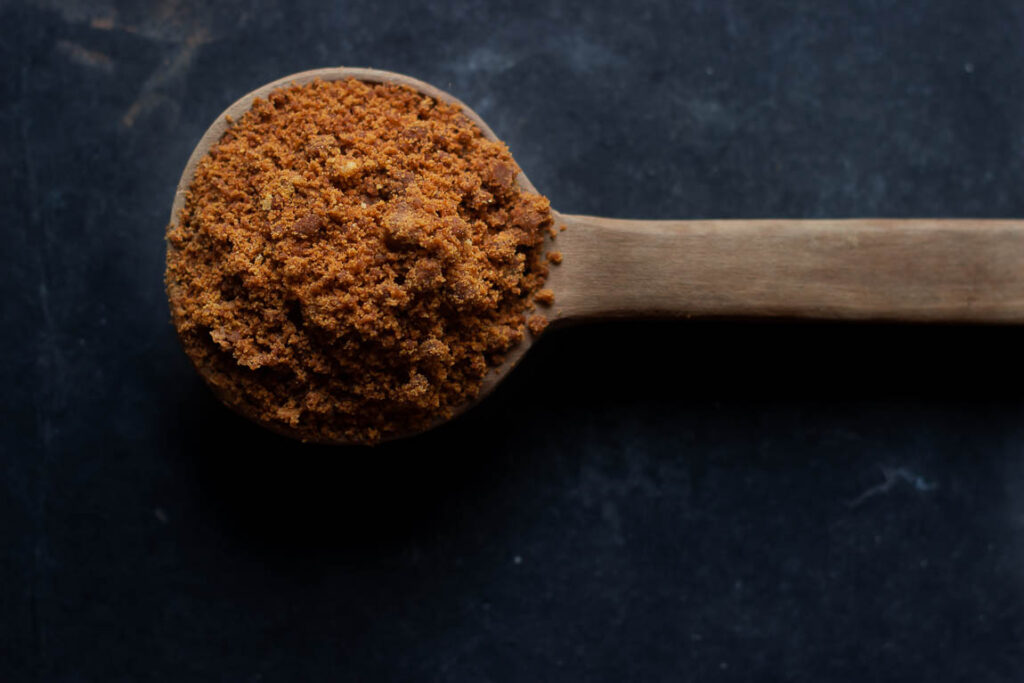
It is important to note that over time, Desi Khand may darken and harden, and its flavor and aroma may change, but it is still safe to consume as long as it does not have any visible signs of spoilage, such as mold or an off odor.

It is recommended to use a clean and dry spoon when scooping Desi Khand from the container to minimize the introduction of moisture, which can shorten its shelf life.
Overall, Desi Khand and Bura are important cultural and culinary elements of Indian tradition, and their use continues to be passed down from generation to generation. They make a good choice as sugar substitutes when possible.
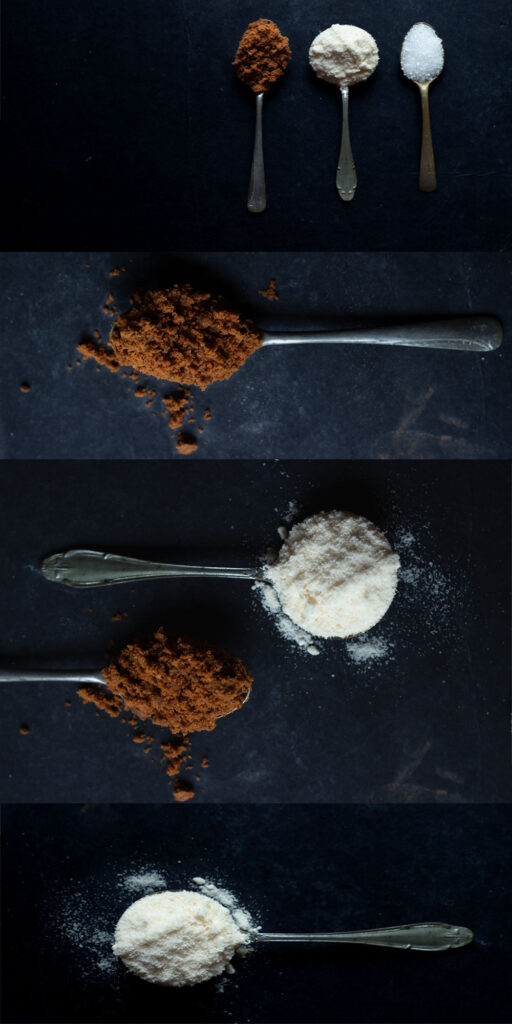
Final Thoughts
Desi Khand and Bura are more than just sweeteners – they’re cultural symbols of wholesome, mindful eating. Whether you’re making everyday tea or Diwali laddoos, these traditional sugars add flavor, heritage, and health to your plate.
So next time you’re looking to sweeten your recipe, skip the refined stuff – and reach for something Desi!
भारत के पारंपरिक प्राकृतिक मिठास स्रोत: देसी खांड और बोरा (सर्वश्रेष्ठ चीनी विकल्प)
देसी खांड, बूरा, शक्कर और सफेद चीनी – ये सभी भारतीय रसोई में इस्तेमाल होने वाले मीठे विकल्प हैं, लेकिन सेहत के नजरिए से इनमें काफी फर्क है। देसी खांड और शक्कर थोड़ी कम प्रोसेस की गई होती हैं और इनमें कुछ मिनरल्स होते हैं, जबकि बूरा और सफेद चीनी पूरी तरह से रिफाइंड होती हैं। हालांकि, ये सभी ब्लड शुगर लेवल बढ़ा सकते हैं और डायबिटीज़ के मरीजों को इनका सेवन सीमित ही रखना चाहिए। पारंपरिक मिठाइयों जैसे खीर, लड्डू, हलवा आदि में देसी खांड और बोरा का उपयोग किया जाता है, लेकिन सेहतमंद विकल्प चुनना हमेशा बेहतर होता है।
भारतातील पारंपरिक गोडवा देणारे पदार्थ: देशी खांड आणि बूरा (सर्वोत्तम साखरेचे पर्याय)
देशी खांड, बूरा, शक्कर आणि पांढरी साखर हे सर्व गोडाचे पर्याय भारतीय स्वयंपाकात वापरले जातात, पण आरोग्याच्या दृष्टीने त्यांच्यात फरक आहे. देशी खांड आणि शक्कर थोड्याशा नैसर्गिक स्वरूपात असतात, तर बूरा आणि पांढरी साखर पूर्णतः प्रक्रिया केलेली असते. या सर्व साखर प्रकारांमुळे रक्तातील साखर वाढू शकते, त्यामुळे मधुमेह असणाऱ्यांनी यांचा वापर मर्यादित ठेवावा. पारंपरिक गोड पदार्थांमध्ये यांचा वापर मोठ्या प्रमाणात होतो, मात्र आरोग्य लक्षात घेऊन योग्य पर्याय निवडणे गरजेचे आहे.
FAQs
Not really. While Desi Khand is less refined than white sugar and may retain trace minerals, it’s still a form of sugar with a high glycemic index – which means it can quickly spike blood sugar levels.
If you’re managing diabetes, here’s what you should keep in mind:
Why Desi Khand Isn’t Ideal for Diabetics:
It’s still sucrose, just like white sugar, and impacts blood glucose. The mineral content in Desi Khand is negligible in terms of diabetes management. Its glycemic response remains high, which can disrupt blood sugar control.
Desi Khand and Bura are traditional Indian sweeteners. They offer several health benefits as compared to refined white sugar:
Desi Khand benefits are listed below:
1. Less Processed:
Desi Khand is less processed than white sugar, retaining more of the natural molasses and minerals. Due to less processing, it is considered healthier than processed white sugar.
2. Mineral Content:
Khand contains trace amounts of important minerals like calcium, iron, magnesium, and potassium due to minimal processing. This makes khand an important source for the minerals.
3. Lower Glycemic Index:
Desi Khand has a slightly lower glycemic index as compared to refined sugar, which may result in a slower rise in blood sugar levels, although it should still be consumed in moderation.
4. Natural Sweetener:
Being less refined, it is considered a more natural sweetener with fewer chemicals used in its production. The food made using khand has richer flavor, depth of sweetness is also more.
Benefits of using Bura are:
1. Nutrient Retention:
Bura is also a form of unrefined sugar, often produced from sugarcane juice, and has a light cream to pale brown color. It retains more of the nutrients from sugarcane juice, including iron, calcium, and phosphorus.
2. Natural Sweetening Agent:
Bura is made from natural sugarcane or palm sap without extensive chemical processing. So it is a naturally derived sweetener.
3. Rich Flavor:
Bura offers a rich, caramel-like flavor that enhances the taste of traditional sweets and desserts. Indian sweets due to their process of cooking, taste better with strong sweetners than refined sugar.
4. Digestive Benefits:
Bura is also considered to aid digestion and help in cleansing the system, when traditionally consumed in small amounts after meals.
General Benefits of Traditional Sweeteners like Bura & Desi Khand
1. Less Refined:
Both Desi Khand and Bura are less refined compared to white sugar, meaning they undergo fewer chemical processes and retain more of their natural properties. So they retain good properties of the sweetner like mineral content, natural flavor, etc
2. Cultural and Culinary Value:
These sweeteners are integral to many traditional recipes and cultural practices, providing an authentic taste and experience. Due to less processing, they retain a more intese flavor which enhances Indian sweets consumed traditionally in our households.
3. Antioxidant Properties:
The presence of molasses in less refined sugars like Desi Khand can provide some antioxidant benefits, though these are relatively minimal.
While these sweeteners can offer some benefits and can be considered as sugar substitutes, it’s important to remember that they are still forms of sugar and should be consumed in moderation, especially by individuals managing conditions like diabetes.
Khand and sugar are both sweeteners derived from sugarcane. Their difference lies in the processing and composition of each. Khand undergoes less processing and hence retains natural molasses whereas, for easy consumption, appearance, and increased shelf life, refined sugar particularly undergoes extensive processing to produce a pure sucrose product.
While both khaand & sugar are derivatives of sugarcane, they differ in their processing and their resultant composition. Khaand retains natural molasses due to lesser processing while refined sugar is almost pure sucrose, with little to no molasses content.
Khand & brown sugar are not the same but do share some similarities, for example:
1. Processing: Both khaand & brown sugar undergo lesser processing than refined sugar. Khand is made from minimal processing from sugarcane while brown sugar is refined white sugar with some molasses reintroduced for the color, texture & taste.
2. Color & Flavor: Both khand & sugar have a brown color due to the presence of molasses. They also have a richer taste and flavor because of the presence of molasses.
3. Molasses Content: Khaand retains more molasses as compared to brown sugar. Though molasses in khand is natural as it undergoes lesser processing. Brown sugar, on the other hand, is refined white sugar where some molasses is added back during processing. The molasses content in brown sugar depends on manufacturer/ brand to brand.
4. Usage: Khand is a traditional form of unrefined sugar used in many Indian sweets & desserts. Brown sugar, however, is used globally and can be easily used as an alternative to refined sugar in various recipes, especially baking & cooking where its flavor & color can enhance the dish.
Khaand and sugar differ in their processing, color, flavor, molasses content, and ultimate usage. While they both are produced from sugarcane, khand is rich in natural molasses, less processed, brown in color, deep in flavor, and largely used as a traditional sweetener in Indian recipes perfected by our grandmothers. On the other hand, sugar is refined, white in color, has minimal to zero molasses, and is used globally in various dishes including baking and cooking recipes which require uniform taste.
Brown sugar and desi khand are derivatives of sugarcane. For making brown sugar, some amount of molasses is added back to the refined sugar, while desi khand retains natural molasses and minerals due to lesser processing. Desi khand is richer in flavor as compared to brown sugar due to natural molasses. This rich flavor makes it ideal to be used in Indian sweets and dishes while brown sugar suits global cooking making it a suitable choice for all types of diverse food.
Khand/ khaand is an unrefined, unprocessed sugar traditionally made in India. It is also known as “khandsari” or “desi khand.” Even today in villages or small towns, Khand is produced by boiling sugarcane juice to form a thick syrup, which is then allowed to cool and solidify into blocks or cones. This age-old method involves minimal processing compared to refined white sugar production on a mass scale, allowing khaand to retain some natural molasses and minerals present in sugarcane juice. Hence Khand derived traditionally has a light brown color and a slightly rich & strong flavor compared to refined white sugar. It is commonly used in Indian cuisine and traditional sweets like bajre ki kheer, rabri, kadha doodh, etc.
No, Bura (also called Boora sugar) is not diabetes-friendly either. Though it’s softer and less processed, Bura is still sugar — and can affect your blood glucose similarly to white sugar or Desi Khand.
Yes, Desi Khand is less processed and retains more nutrients than refined sugar, making it a healthier option.
Bura is semi-refined and prepared without harsh chemicals, making it a closer-to-natural alternative than white sugar.
Bura is made by boiling and crystallizing sugar syrup, then drying and grinding it into a fine powder.



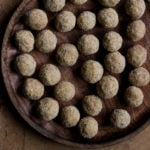
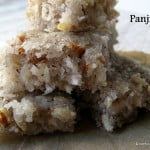

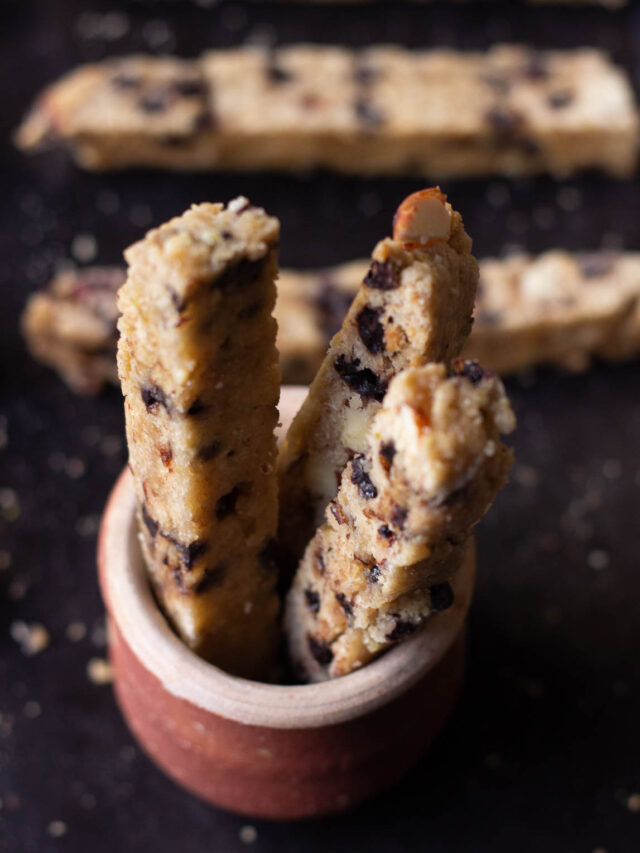
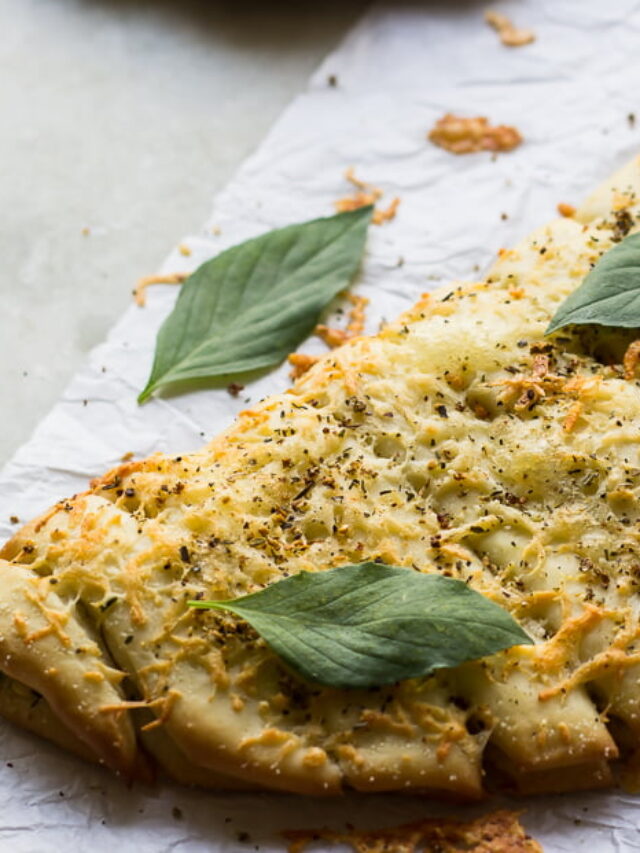
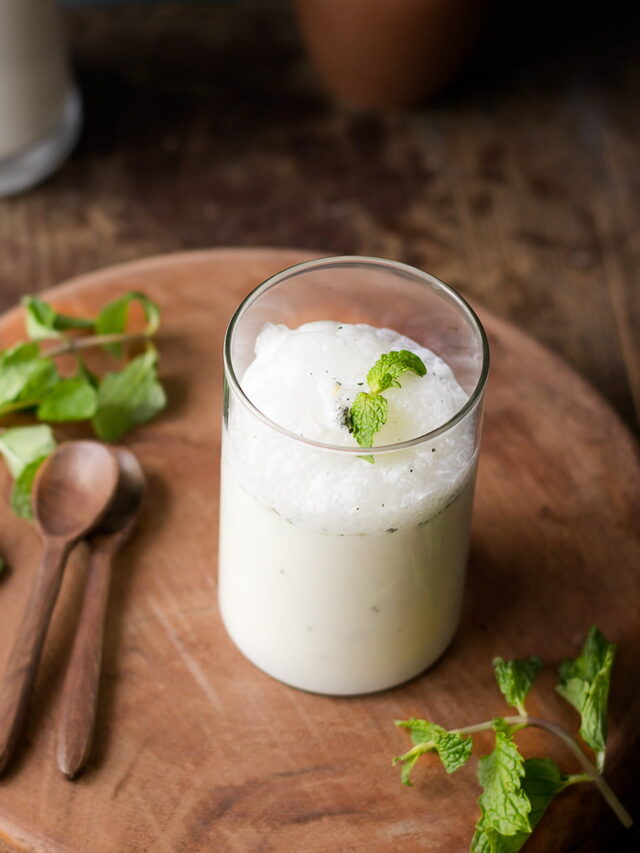

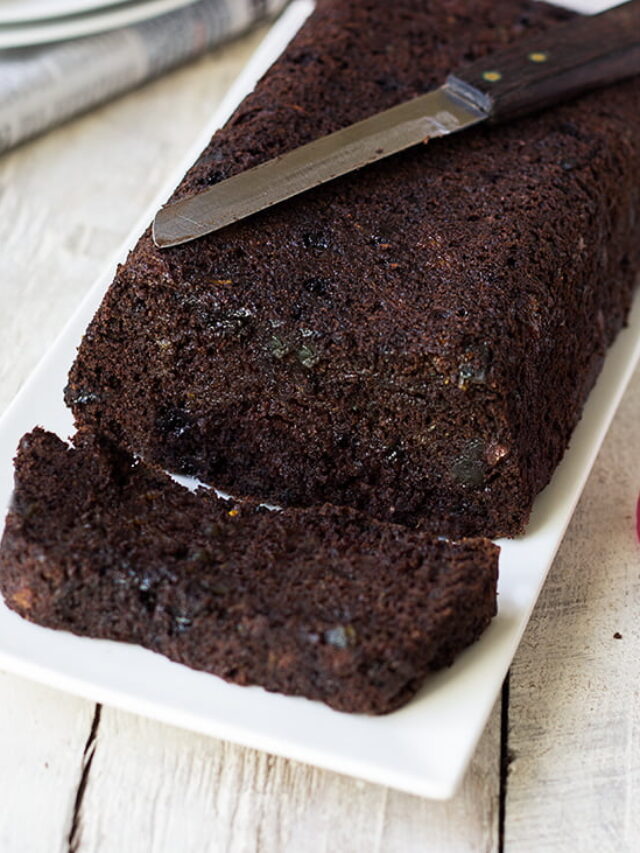
Very comprehensive encyclopedic briefing on Burra and Khand – derived just by boiling Natural Sugar Cane juice. I found great inspiration to avoid Refined White Sugar from reading your highly knowledgeable article. I wish you and your near & dear ones best of luck.